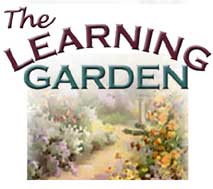
From Seed to Seed:
Plant Science for K-8 Educators
 |
From Seed to Seed: |
|
|
Plants with medicinal properties In recent years, there has been a resurgence of interest in indigenous cultures, particularly in their use of herbal cures. The threat of ecosystem destruction (especially that of rainforests) and young people's abandonment of tribal lifestyles has made the documentation of these traditional practices extremely important. Furthermore, many people in modern societies perceive this traditional and holistic approach to be more natural and health-inducing. As a result, many modern-day gardeners grow herbs that are known to have medicinal properties. Finally, pharmaceutical companies have a vested interest in exploring traditional medicine. Perhaps the cures to many of today's seemingly incurable diseases lie in these practices. Plants have been used throughout history as sources of healing preparations, stimulants, and constitutionals-and even to repel demons. In some cultures, folk remedies were passed down from generation to generation. In other cultures, only privileged "witch doctors" or shamans were privy to this information. Although the historical record of the use of herbal remedies is limited, we do know that as far back as 4000 years ago, Assyrian herbalists were using more than 100 different plants as medicinals. Historically, the study of botany has been closely linked to the study of medicinals. Most early botanists were medical practitioners searching for new remedies. Even Linnaeus, responsible for our binomial system of naming plants, was a practicing physician. As recently as the beginning of the 20th century, medical training included the study of botany, so that physicians would understand the source of various drugs and remedies. While Western medicine has moved away, for the most part, from herbal medicine, many rural populations in the rest of the world still rely on herbal medicine practices. Some countries have incorporated traditional herbal medicine into modern health-care systems (e.g., China); others maintain the two practices separately (e.g., India). The biodynamic components (those that have physiological effects on an organism) of medicinal plants are usually products of living cells. In some cases, they may be waste products or the products of metabolism. In other cases, they may serve to protect the plant from insects, disease, or other threats. Sometimes the utility of these chemicals to the plant can only be speculated upon. There are many different types of active chemicals; one of the most important groups of biodynamic chemicals is the alkaloids. These bitter-tasting compounds are important components of a number of familiar medicinals. They are alkaline (that is, they have a high pH) and contain nitrogen. Let's look at a few historically important medicines in which the active ingredients are alkaloids. |
||||
|
Made possible by a grant from Oracle Corp. Copyright 2001, National Gardening
Association, Inc. For questions regarding this web site, contact Webmaster |